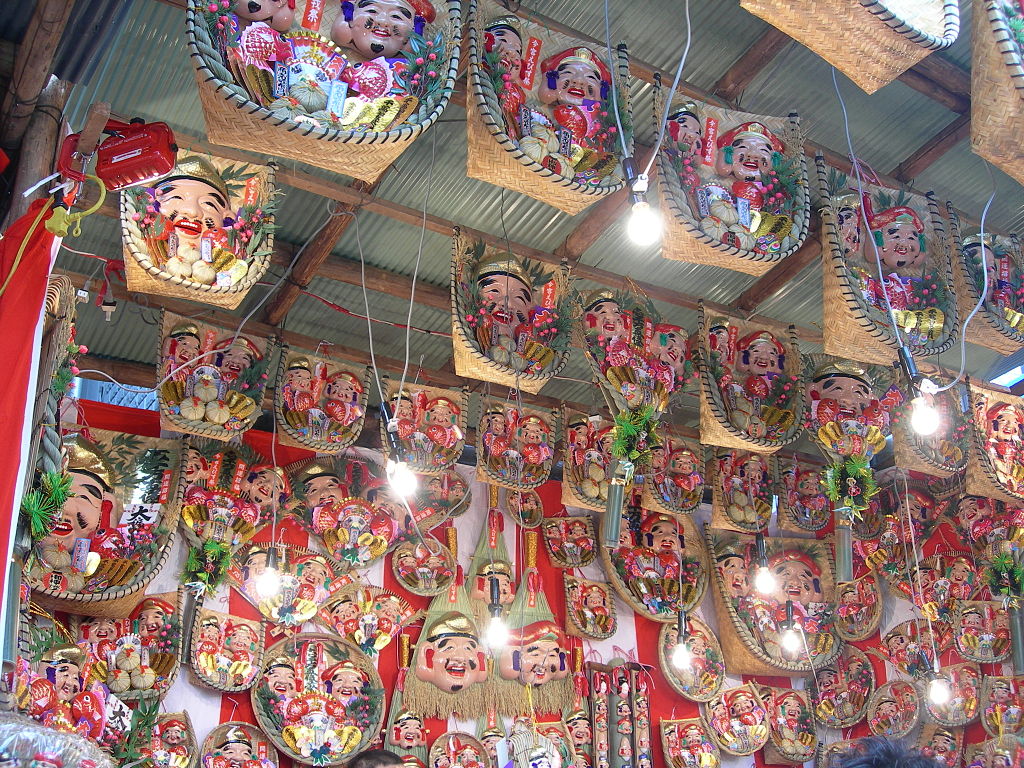Dec 21, 2016
New Year’s Celebrations in Osaka: Ring in the Good Luck 2017

Winter fun seeking in Osaka is an invigorating blend of the traditional and the modern. Consider the age-old practice of pounding rice to usher in the Japanese New Year. Foods made from mochi, the sticky paste that is molded into rice cakes, are considered a “Food for the Gods” and consuming them during New Year’s celebrations is a way to bring health and wealth to the coming 12 months.
No one knows for sure how old mochi is but there are records indicating the rice food was a centrepiece of New Year’s festivities as far back as the Heian period which got underway in 794 and lasted almost 200 years. You can get help swaying your own impending prosperity at Mizumadera Temple on January 2-3 at the 1000 Times Rice Cake Pounding.
After the rice is soaked overnight it is loaded into a massive mortar where attendees then have a go at pounding the gelatinous glob into the luck-carrying rice cakes with wooden mallets that weight from 10 to 15 pounds. To leave nothing to chance, the mallet-swinging is done to the rhythm of drums that are said to scare away even the boldest of evil spirits still lurking around the new year.
Physical exertion is also a key element to the Namba Yasaka Shrine Festival staged on the third Sunday of January. The shrine, accessible via the Yotsubashi subway line, has had a rough history. All the buildings in the sacred Buddhist temple complex burned to the ground in the 1800s and then were destroyed again during air raids in World War II. In the 1970s the main shrine was reconstructed as a massive lion head 12 metres high and 11 metres wide; inside the mouth is a festival stage.
The lion is thought to have the power to grant wishes which makes it a popular stop during a new year. Japanese myth holds that Susano-o-no-mikoto, the resident deity, once killed a gargantuan snake that paved the way for peace and prosperity. That momentous occasion is lionized by the Tug-of-War Ritual during the festival, a colourful event that Osaka recognised as its first-ever intangible folk cultural property in 2001.
If it is luck you are chasing in the new year, sometimes sacrifices must be made. At the Shitenno-Ji Temple, Doya Doya Matsuri is a fortnight of festivities that comes to a close when hundreds of nearly naked high school boys scramble around the Buddhist shrine while buckets of ice water are poured on them. The “strength water” is expected to harden them for the rigors of the coming school year.
While Osaka students bribe the spirits in search of good grades, the city’s business people are not willing to leave future balance sheets to the fates. In early January merchants in the Osaka Prefecture gather at the Imamiya Ebisu Shrine to try and get on the good side of Ebisu. Ebisu is the God of Wealth among the Seven Gods of Good Fortune – he is the one usually seen wielding a fishing rod.
The Toka Ebisu Festival runs from January 9 until the January 11 with the celebration culminating on January 10 (Toku Ebisu means “Tenth Day Ebisu”). There is a colourful parade staged to please the patron of business, good luck and good fishing with geisha dancing, traditional performing arts and rice cake making. The Toka Ebisu Festival is also a good spot for celebrity spotting.
More than a million people filter through the free festival with many seeking just the right combination of lucky charms to influence the business year ahead. Attendees purchase good fortune bamboo branches from circulating Shrine Maidens pitching the promise that buying branches will cause a business to prosper – especially if those branches are augmented with a few high-priced talismen like money bags and lucky coins. Really, bad luck doesn’t have a chance around Osaka in January.
By Ogiyoshisan (Own work) [Public domain], via Wikimedia Commons


About the author